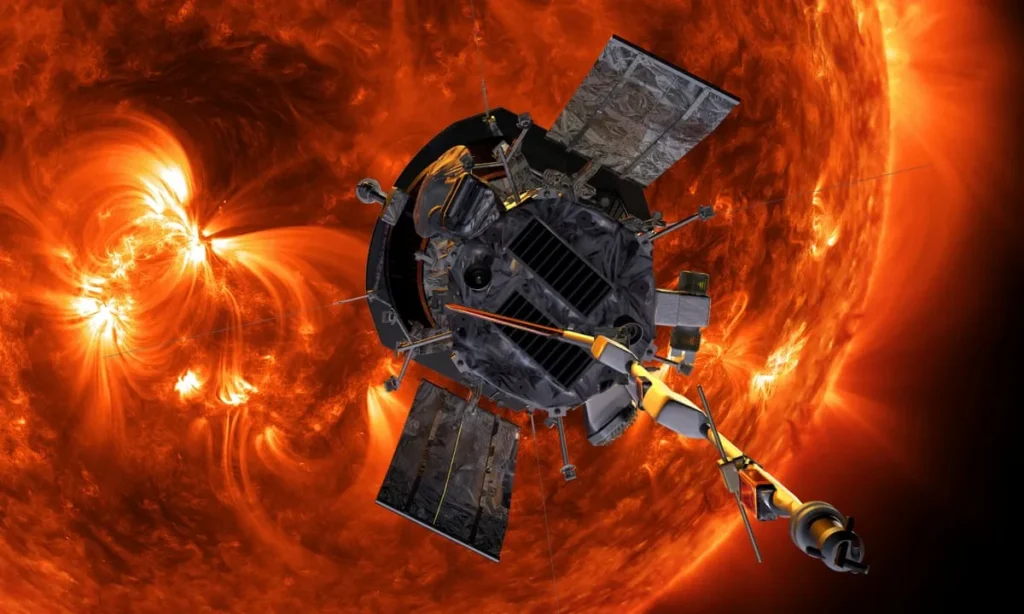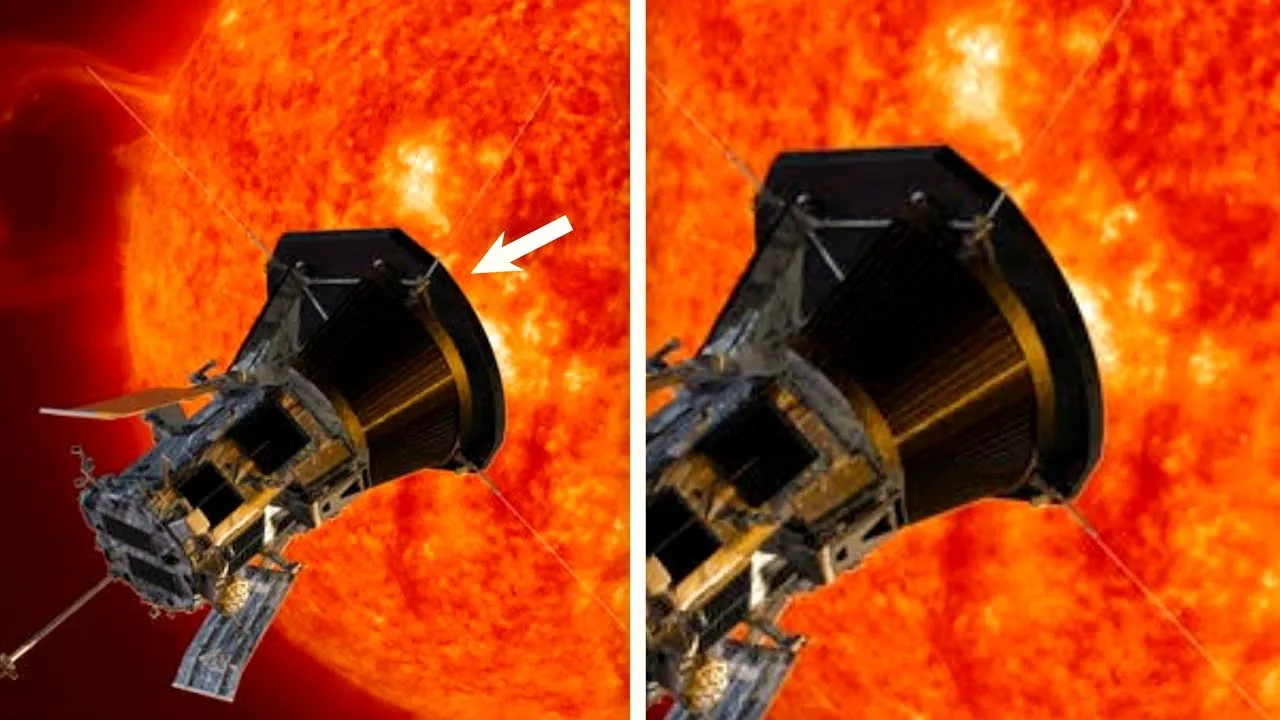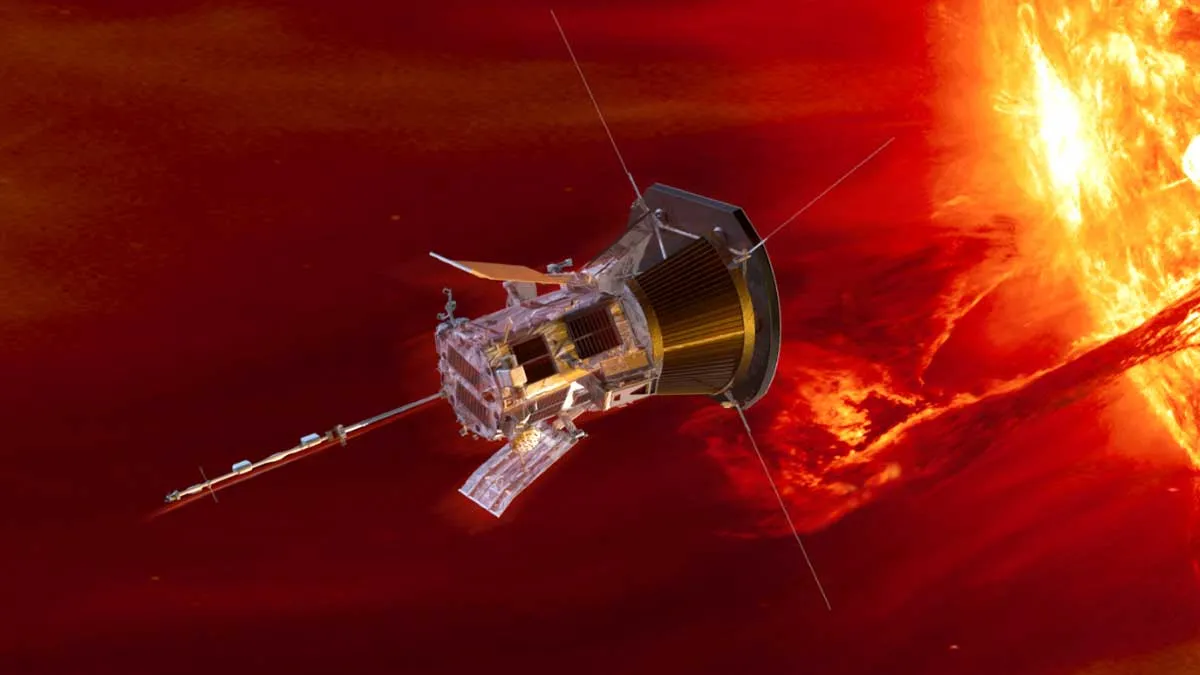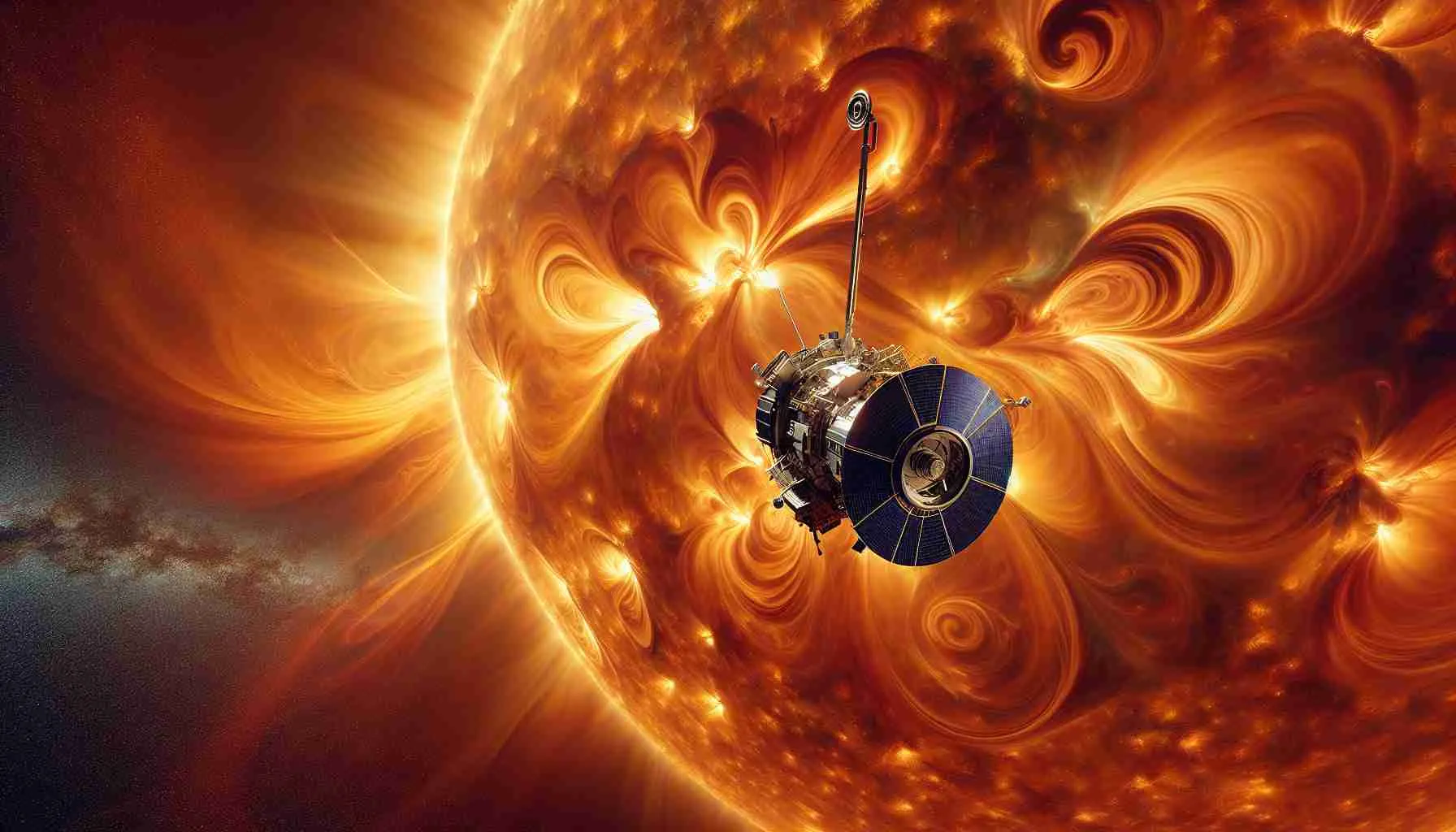
In a groundbreaking achievement, NASA’s Parker Solar Probe has made history by becoming the closest human-made object to the Sun. Launched in August 2018, the probe embarked on a daring mission to explore the Sun’s outer corona, setting new records and expanding our understanding of our closest star.
On December 24, 2024, the probe soared within just 6 million kilometers (approximately 3.8 million miles) above the Sun’s surface, marking its closest approach yet. This proximity, roughly 0.04 times the distance between the Earth and the Sun, allowed the Parker Solar Probe to gather unprecedented data, moving at a staggering speed of 692,000 kilometers per hour (about 430,000 miles per hour).

Engineering Marvels and Scientific Breakthroughs
The Parker Solar Probe’s success is underpinned by its innovative technology. Equipped with a cutting-edge carbon foam shield, the probe withstands extreme temperatures ranging between 980 and 1425 °C (1,800 and 2,600 degrees °F). This thermal protection system ensures that the onboard instruments remain operational, shaded, and at room temperature, even when diving through the solar corona.
Nicky Fox, Associate Administrator and head of the Science Mission Directorate at NASA Headquarters, highlighted the significance of this mission, stating, “Flying this close to the Sun is a historic moment in humanity’s first mission to a star. By studying the Sun up close, we can better understand its impacts throughout our solar system, including on the technology we use daily on Earth and in space.”
Expanding Human Knowledge of the Sun and Beyond
The data collected by the Parker Solar Probe is not only rewriting our understanding of the Sun but also enhancing our knowledge of the broader cosmos. Nour Rawafi, the project scientist at the Johns Hopkins Applied Physics Laboratory, emphasized the probe’s impact: “[The] Parker Solar Probe is braving one of the most extreme environments in space and exceeding all expectations. This mission is ushering a new golden era of space exploration, bringing us closer than ever to unlocking the Sun’s deepest and most enduring mysteries.”

From discovering unexpected structures in the solar atmosphere to studying the dynamics of solar wind and coronal mass ejections, the probe’s findings are pivotal. Adam Szabo, mission scientist at NASA’s Goddard Space Flight Center, explained, “This close approach will give us more data to understand how [solar wind] is accelerated closer in.”
Implications for Space Weather and Interplanetary Study
The Parker Solar Probe’s journey also provides valuable insights into space weather, a critical field that examines the interaction of solar wind with the planetary systems in our solar system. Understanding space weather is essential for predicting its effects on Earth and technology in space, thereby mitigating potential risks.
The probe’s repeated flybys and the scientific data harvested during these maneuvers have provided a unique perspective on celestial phenomena, including a fresh look at Venus and the comet NEOWISE. The detailed analysis of Venus’ radio emissions and its orbital dust ring were among the additional bonuses of this mission.

As the Parker Solar Probe continues its scheduled passes of the Sun in 2025, each orbit promises more data and more discoveries, potentially answering questions that scientists have pondered for decades. Joe Westlake, director of the Heliophysics Division at NASA Headquarters, aptly summed up the sentiment: “It’s an amazing accomplishment.”
